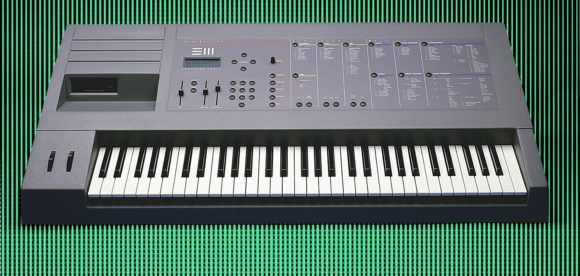Peter:
You wanted to put down a marker against AKAI with the Emulator III. Do you think that the Emulator III got out on the market too late or was it just too expensive?
Dave:
The EIII was the obvious successor to the E2. We really didn’t worry much about the competitive entries from Casio, Akai, and Roland; we wanted to give our E2 customers the additional features they had requested: true 16 bit fidelity; stereo samples; more channels; more, user installable, memory; and a richer feature set. While we accomplished that, there was one fatal problem: reliability.
Soon after the EIII went into production, we started getting reports of problems. Machines were returned to the factory, but when we got them, they worked fine. Whatever was wrong, it was intermittent but catastrophic.
It took months to find the problem – the SIMM sockets used for the sample memory had a known flaw in the design, but the manufacturer had sold them to us anyway. As soon as we knew, we issued a recall and replaced them all, in many cases flying throughout the world, but by then the EIII’s reputation had been ruined. It took us years to recover.
Peter:
E-Mu went through hard times for sure. How big was the company at that time?
Dave:
I think E-mu had grown to about 100 employees during the boom of the Emulator 2. The failure of the EIII to maintain that revenue stream brought about another major layoff. Even with the staff cuts, we were still losing money. For the first time in company history, we failed to have enough money in the bank to cover our payroll. Through some quirk of fate we never understood, our bank issued the payroll checks anyway! We gave everybody the day off, and told them to be sure to take the checks to another bank and get cash, just in case our bank changed their minds. The next week, we finally closed a licensing deal with Technics/Matsushita for some of our patents, and that gave us enough cash to get out the Proteus.
Peter:
One more thing. I think it‘s really interesting that consumer started not only to rate the companies’ products. They also focused on the sample libraries. Did you establish a special department for that? Anyhow, it was paying off, wasn’t it?
Dave:
I remember the day in December of 1980 when we recorded the first musical sample, a violin, on the Emulator prototype. That was the day we first had an inkling of what we had started. The result wasn’t great – after all it was an amateur musician and an undistinguished instrument – but we all heard the potential. Amazingly, it took us over a year from that date to realize the importance of the sound library. Few musicians (those pioneering 25 Emulator buyers of 1981) had the vision and skill to create their own libraries; far more were attracted to having a vast selection of sounds to fit their musical needs. While we all argued which of the changes we made at NAMM 1982 saved the Emulator, I’ve always felt the expanded sound library was the one that made the most difference.




